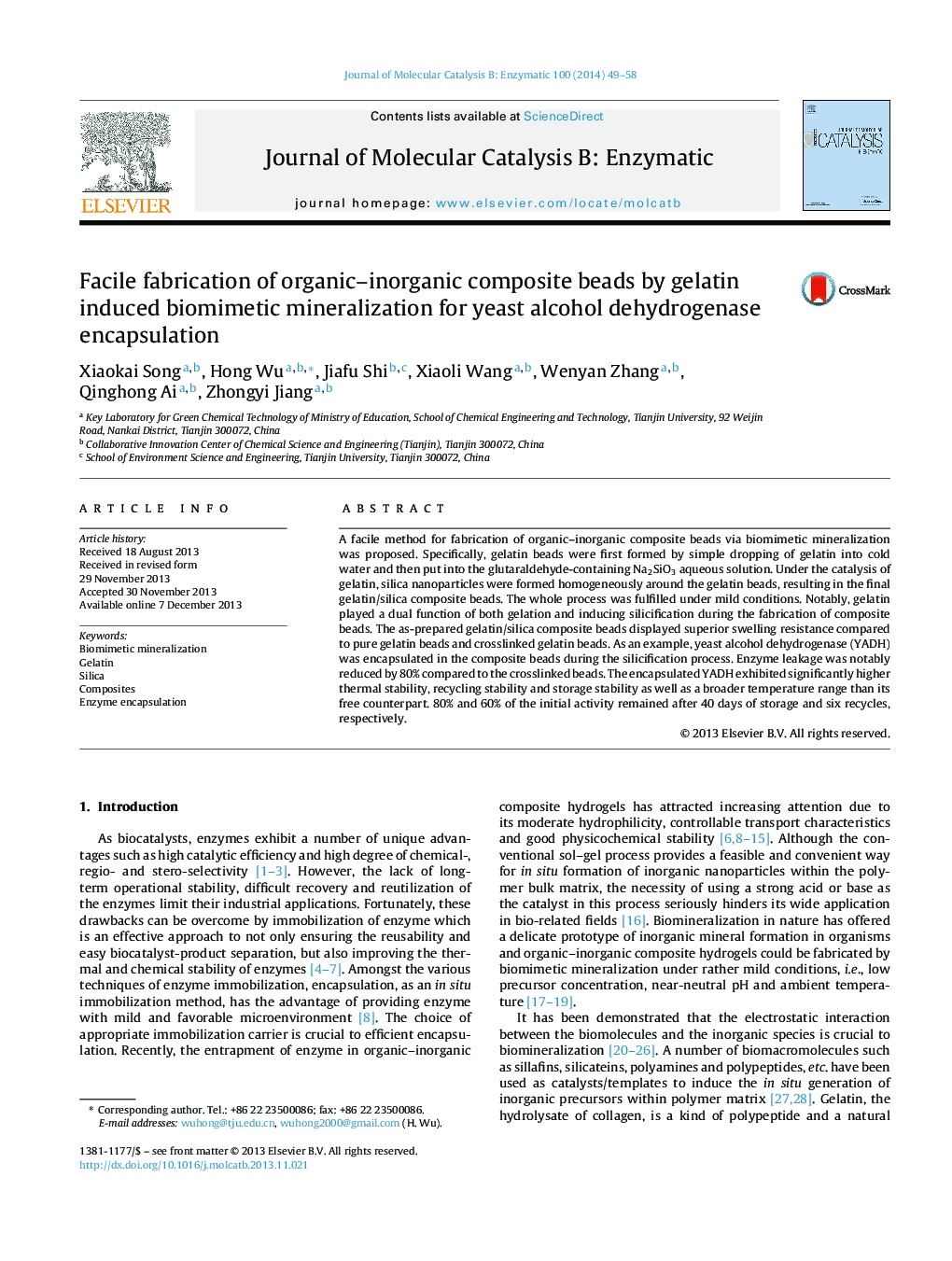| Article ID | Journal | Published Year | Pages | File Type |
|---|---|---|---|---|
| 69765 | Journal of Molecular Catalysis B: Enzymatic | 2014 | 10 Pages |
•The gelatin/silica composite beads were prepared via biomimetic mineralization.•The gelatin/silica composite beads displayed superior swelling resistance.•Enzyme leakage was notably reduced by 80% compared to the crosslinked beads.•The stability of the encapsulated enzyme was significantly enhanced.
A facile method for fabrication of organic–inorganic composite beads via biomimetic mineralization was proposed. Specifically, gelatin beads were first formed by simple dropping of gelatin into cold water and then put into the glutaraldehyde-containing Na2SiO3 aqueous solution. Under the catalysis of gelatin, silica nanoparticles were formed homogeneously around the gelatin beads, resulting in the final gelatin/silica composite beads. The whole process was fulfilled under mild conditions. Notably, gelatin played a dual function of both gelation and inducing silicification during the fabrication of composite beads. The as-prepared gelatin/silica composite beads displayed superior swelling resistance compared to pure gelatin beads and crosslinked gelatin beads. As an example, yeast alcohol dehydrogenase (YADH) was encapsulated in the composite beads during the silicification process. Enzyme leakage was notably reduced by 80% compared to the crosslinked beads. The encapsulated YADH exhibited significantly higher thermal stability, recycling stability and storage stability as well as a broader temperature range than its free counterpart. 80% and 60% of the initial activity remained after 40 days of storage and six recycles, respectively.
Graphical abstractFigure optionsDownload full-size imageDownload as PowerPoint slide
